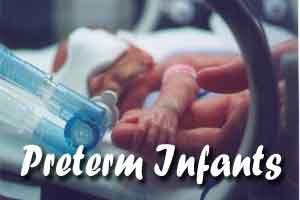- Home
- Editorial
- News
- Practice Guidelines
- Anesthesiology Guidelines
- Cancer Guidelines
- Cardiac Sciences Guidelines
- Critical Care Guidelines
- Dentistry Guidelines
- Dermatology Guidelines
- Diabetes and Endo Guidelines
- Diagnostics Guidelines
- ENT Guidelines
- Featured Practice Guidelines
- Gastroenterology Guidelines
- Geriatrics Guidelines
- Medicine Guidelines
- Nephrology Guidelines
- Neurosciences Guidelines
- Obs and Gynae Guidelines
- Ophthalmology Guidelines
- Orthopaedics Guidelines
- Paediatrics Guidelines
- Psychiatry Guidelines
- Pulmonology Guidelines
- Radiology Guidelines
- Surgery Guidelines
- Urology Guidelines
AAP Guidelines for Management of gastroesophageal reflux in Preterm Infants

Pharmacologic agents "should be used sparingly" in preterm infants with gastroesophageal reflux, according to the new guideline published in the journal Pediatrics. A preterm infant is a baby born before 37 completed weeks of gestation.
The American Academy of Pediatrics recommended the following for gastroesophageal reflux, which is nearly universal among preterm infants:
Key Recommendations:
- GER is almost universal in preterm infants. It is a physiologic process secondary to frequent TLESR, relatively large-volume liquid diet, and age-specific body positioning. As such, it is a normal developmental phenomenon that will resolve with maturation.
- Pathologic GER occurs when reflux of acidic gastric contents causes injury to the lower esophageal mucosa. Although preterm infants do have some acidic GER episodes, most GER episodes in this population are only weakly acidic because of their lower gastric acidity and frequent milk feedings, making such esophageal injury unlikely to occur.
- Signs commonly ascribed to GER in preterm infants include feeding intolerance or aversion, poor weight gain, frequent regurgitation, apnea, and desaturation and bradycardia and behavioral signs, including irritability and perceived postprandial discomfort. In the data, the temporal association of these perceived signs of GER with either acidic or nonacidic reflux episodes as measured by MII and pH is not supported, and the signs will usually improve with time without treatment.
- Data regarding the possible association between worsening lung disease attributable to GER and microaspiration in mechanically ventilated preterm infants are sparse. Further studies to elucidate such an association and to assess the effect of GER treatment on the severity of lung disease are needed.
- There is marked variability in the diagnosis and treatment of GER in preterm infants among NICUs, perhaps because the diagnosis is usually made by clinical assessment of signs and symptoms and/or a trial of nonpharmacologic or pharmacologic treatment rather than definitive tests.
- Conservative measures to control reflux, such as left lateral body position, head elevation, and feeding regimen manipulation, have not been shown to reduce clinically assessed signs of GER in the preterm infant; for infants greater than 32 weeks’ postmenstrual age, safe sleep approaches, including supine positioning on a flat and firm surface and avoidance of commercial devices designed to maintain head elevation in the crib, should be paramount as a model for parents of infants approaching discharge from the hospital.
- Preterm infants with clinically diagnosed GER are often treated with pharmacologic agents; however, a lack of evidence of efficacy together with emerging evidence of significant harm (particularly with gastric acid blockade) strongly suggest that these agents should be used sparingly, if at all, in preterm infants.
Gastroesophageal reflux (GER), generally defined as the passage of gastric contents into the esophagus, is an almost universal phenomenon in preterm infants.
For more reference log on to the journal Pediatrics.
desaturation and bradycardiagastric acid blockadegastroesophageal refluxGERhead elevation in the criblower gastric acidityNICUnonacidic reflux episodesPharmacologic agentspostprandial discomfortPreterm Infantsregimen manipulationsparinglytemporal associationTLESR
Source : With inputs from the journal PediatricsNext Story
NO DATA FOUND

Disclaimer: This site is primarily intended for healthcare professionals. Any content/information on this website does not replace the advice of medical and/or health professionals and should not be construed as medical/diagnostic advice/endorsement or prescription. Use of this site is subject to our terms of use, privacy policy, advertisement policy. © 2020 Minerva Medical Treatment Pvt Ltd